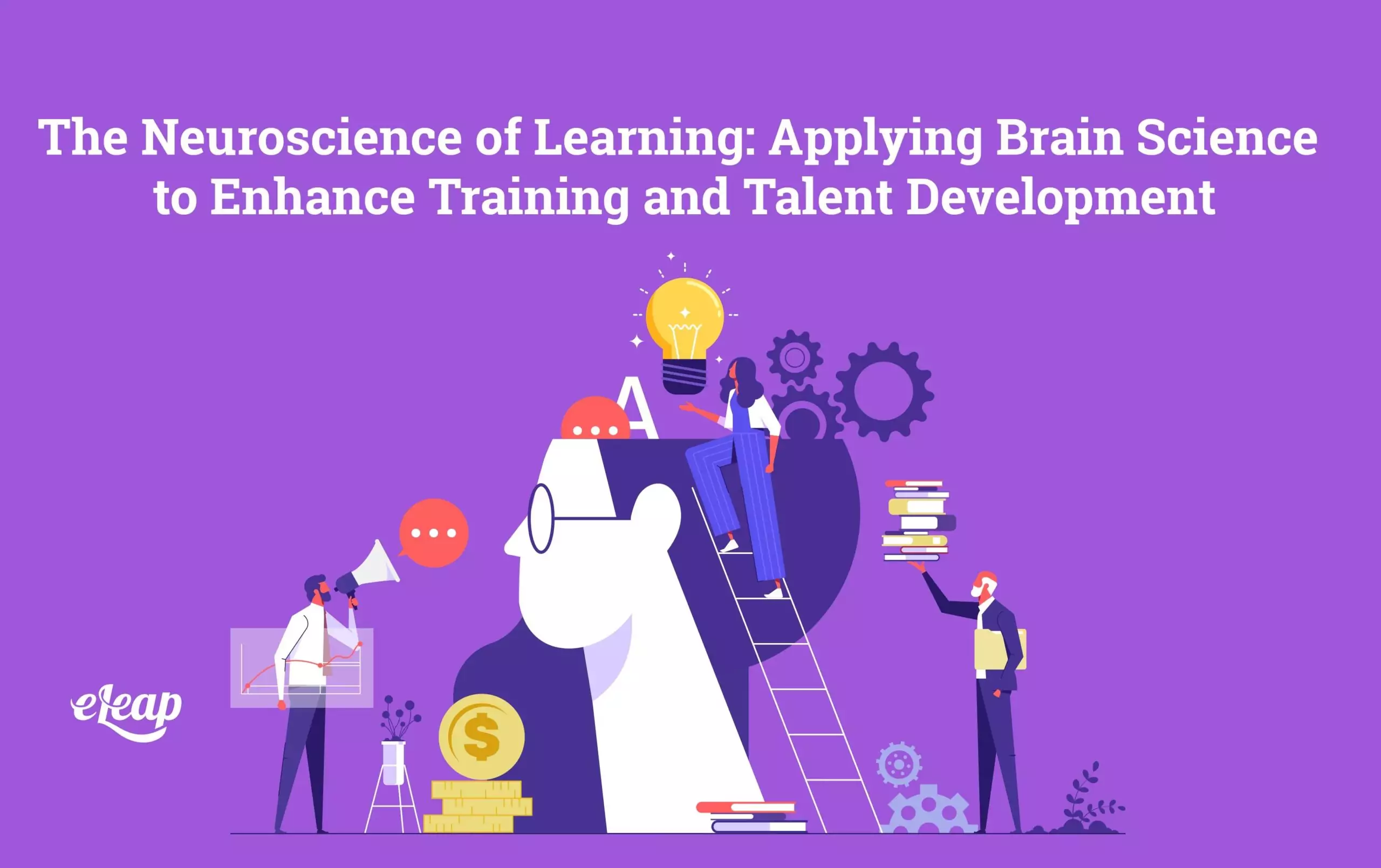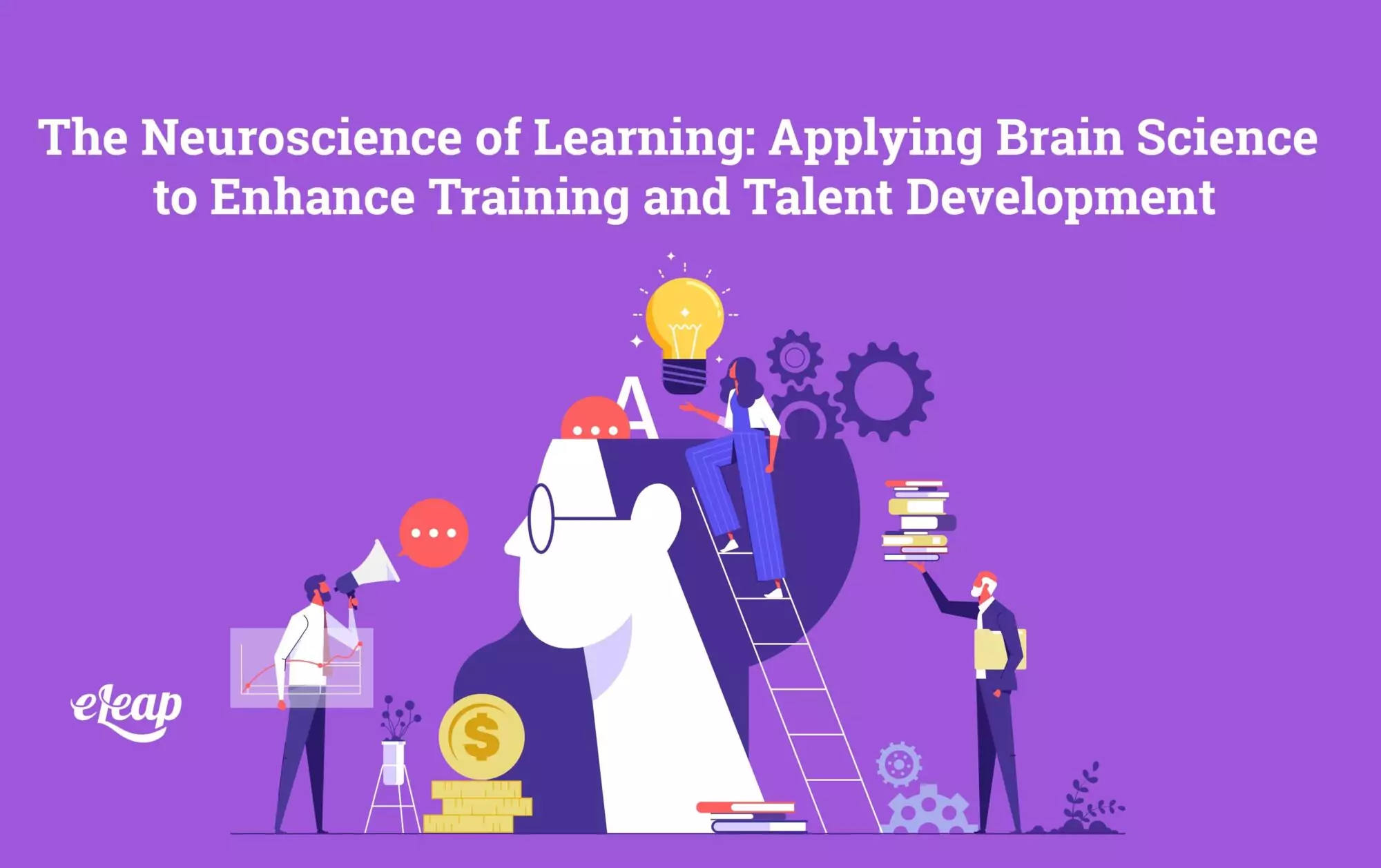The Neuroscience of Learning: Applying Brain Science to Enhance Training and Talent Development

The human brain is the epicenter of learning, a labyrinth of billions of neurons forming an intricate network of connections. This understanding, rooted in neuroscience, provides critical insights that can revolutionize the way we approach training and talent development in a professional setting.

According to a 2018 report from McKinsey & Company, organizations that prioritize learning and talent development are more likely to outperform their competition in terms of productivity, profitability, and overall market growth. Yet, how can companies optimize these learning initiatives? The answer lies within the realm of neuroscience, the study of the brain and nervous system.
As the renowned leadership consultant Peter Drucker famously stated, “Knowledge has to be improved, challenged, and increased constantly, or it vanishes.” Neuroscience helps us understand how knowledge is acquired, processed, and retained in our brains. This insight allows organizations to tailor their training and talent development programs to align with these natural processes, maximizing effectiveness and, ultimately, driving organizational success.
In this piece, we’ll delve into the fascinating world of the neuroscience of learning and explore how these scientific principles can be applied to enhance training and talent development. As we journey into this intricate and compelling field, we aim to equip business professionals with a deep understanding of the transformative power of brain-based learning.
The Neuroscience of Learning: A Snapshot
The human brain, a biological marvel, is in a constant state of learning. It forms and strengthens neural connections, creating intricate networks that carry and process information. The brain’s elasticity, known as neuroplasticity, plays a critical role in this process, allowing our brains to reshape and adapt, even into adulthood.
Understanding these neurological processes provides valuable insights for devising strategies that can make training and talent development more effective and efficient.
Applying Neuroscience to Enhance Training and Talent Development
The science of how our brain learns can guide us in designing strategies for training and talent development. Let’s delve into some key insights:
Emphasize Active Learning
Neuroscience suggests that active learning, where learners participate actively, leads to better knowledge retention. A study in Proceedings of the National Academy of Sciences (Freeman et al., 2014) showed that active learning increases academic performance in STEM education. Therefore, integrating interactive activities and problem-solving exercises into training programs can encourage active engagement and improve outcomes.
Understanding the Role of Sleep
The saying “Sleep on it” holds a scientific basis. During sleep, the brain processes and consolidates new information, enhancing problem-solving and creativity. This is backed by a behavioral neuroscience study published in ScienceDirect. The research provided compelling evidence that sleep plays a vital role in facilitating the learning process for motor-sequence memory tasks overnight. In contrast, periods of wakefulness during the same time frame did not yield comparable enhancements in learning performance. Therefore, integrating regular rest periods in intensive training schedules can lead to improved learning outcomes.
Leveraging Emotions in Learning
Emotion, a critical factor in learning, dramatically influences our attention, retention, and application of knowledge. Neuroscience reveals that emotional responses, primarily processed by the amygdala, enhance memory encoding, making learning more impactful.
In training and talent development, emotional engagement can be amplified through storytelling, real-life scenarios, or other emotion-evoking elements. Moreover, insights from neuroscience can be instrumental in designing effective emotional intelligence training. By understanding and leveraging emotions, organizations can create memorable training programs, fostering an emotionally intelligent workforce that can empathize, manage stress, and navigate complex social interactions effectively. As Maya Angelou aptly put it, “People will never forget how you made them feel,” emphasizing the importance of emotions in memorable learning experiences.
Harness the Power of Repetition
The brain operates on patterns and frequencies; the more a neural pathway is triggered through repetition, the stronger it becomes. This process, known as Long-Term Potentiation, facilitates the transformation of short-term memory into long-term memory. Implementing repetition in training – be it through iterative exercises, revisiting key points across multiple sessions, or encouraging employees to apply new skills repeatedly – helps engrain the learned information, improving recall and application in the workplace.
Reinforcement, on the other hand, capitalizes on the brain’s reward system. Successful learning triggers the release of dopamine, which not only brings feelings of satisfaction but also strengthens the neural pathways linked to the learned material. In an organization, positive reinforcement, such as recognition, rewards, or verbal affirmation, can increase the likelihood of employees engaging in learning behaviors, leading to the internalization of new knowledge and skills.
Understanding Individual Differences
Neuroscience teaches us that each brain is unique, leading to individual differences in learning. Some people might be visual learners, others auditory or kinesthetic. Understanding these differences is critical to effective talent development. By tailoring training methods to individual learning styles, organizations can enhance their employees’ knowledge acquisition and retention. For example, a mix of lectures, visual presentations, and hands-on activities can cater to various learners.
Moreover, insights into cognitive strengths and weaknesses can guide personalized learning paths and career development strategies. Neurodiverse individuals, for instance, may have unique strengths that, when recognized and nurtured, can bring novel perspectives and capabilities to a team.
Dr. Howard Gardner, the proponent of the Multiple Intelligences theory, stated, “We have to recognize that not everybody has the same kind of intelligence.” Embracing this neuroscience-backed understanding, businesses can optimize talent development strategies, catering to diverse brains for maximum growth and success.
Neuroscience: A Catalyst for Change in Business Training
The potential of neuroscience in the business world is enormous. By leveraging an understanding of how our brains learn, we can optimize training strategies, enhance talent development, and, ultimately, boost business performance.
“Learning and innovation go hand in hand. The arrogance of success is to think that what you did yesterday will be sufficient for tomorrow,” said William Pollard. Neuroscience is one of those innovations, presenting a revolutionary tool for ensuring tomorrow’s success.
Business professionals should strive to incorporate these insights into their training strategies. This not only involves understanding neuroscience but also being open to change and continuous learning.
Embracing the neuroscience of learning is an investment in your team’s potential. Training programs built on this foundation can foster a culture of continuous learning, innovative thinking, and adaptability, which are invaluable traits in today’s dynamic business world. By understanding and applying neuroscience, we can create environments that do not just teach but inspire, engaging our innate curiosity and drive to learn.
Expanding Horizons: The Future of Training and Talent Development
As we delve further into the realm of neuroscience, we discover the intricate and profound ways in which our brains learn. This knowledge is invaluable at a time when upskilling and reskilling have become fundamental to business growth and success. Neuroscience offers a new lens to view training and talent development, allowing us to craft strategies that align with how our brains naturally learn.
However, it’s crucial to remember that applying neuroscience in training and development isn’t a ‘one-size-fits-all’ solution. As neuroscientist David Eagleman writes, “Your brain is not just an organ. It’s the most complicated object we’ve discovered in the universe.” The uniqueness of each individual’s brain necessitates adaptable and flexible training strategies that can cater to different learning styles and preferences.
Investing in understanding the neuroscience of learning is an investment in your team and, ultimately, your organization’s future success.
Unveiling the mysteries of the human brain, and applying these findings to our training and talent development strategies, can open up a world of potential and possibilities. It is a pathway to more effective, impactful learning that can elevate individuals, teams, and entire organizations.
As we move forward, let’s embrace the knowledge that neuroscience offers, knowing that in the brain’s complex folds lie the keys to unlocking the full potential of our most vital resource – our people.